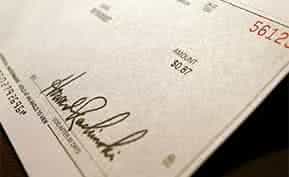Email Marketing Techniques: How to Avoid the Dreaded Spam Filter
In most corporations today, email marketing programs continue to play a major role in sales and marketing strategies.
In fact, a survey conducted earlier this year by Dantran Media indicates that as many as 83 percent of businesses still consider email to be their most important and widely-used advertising and lead generation initiative. That same study shows that approximately 35 percent of B2B marketers and almost 40 percent of B2C marketers actually plan to increase their use of email as a marketing tool in the coming year.
But, buyers are getting increasingly frustrated by the massive volumes of junk email they receive on a daily basis, and are relying more and more on sophisticated spam filters to block unwanted messages from clogging their inboxes. This approach, however, can be counterproductive – often preventing legitimate, relevant, and targeted marketing messages and promotions from getting through.
So, how can you avoid the dreaded spam filter, and maximize the results from your email marketing campaigns? The truth is, no two spam filters are exactly the same. And, most available solutions offer extensive customization, so companies can adjust the filtering techniques and related controls to meet their specific needs. However, there are some smart ways to outwit the spam filters, regardless of how they are implemented or set up, and make sure your email gets delivered to its intended target.
Avoid Certain Words
Certain words and phrases simply scream “SPAM”, and almost every spam filter out there today will be dynamically triggered to block any and all messages that contain them.
These include: free, new and improved, money back guarantee, and other typical marketing-speak. Other, more sophisticated solutions will even look for the word “unsubscribe” or other removal requests that clearly indicate bulk email distribution.
If at all possible, avoid using terms like these in your content. Some companies have found it nearly impossible to lose the sales lingo, and have attempted to modify their trigger words by inserting symbols between the letters. For example, they use FR**EE instead of FREE. While this approach may effectively trick the spam filters, it can negatively impact the readability of the content, and make the company sending the message appear unprofessional. Therefore, it is not recommended.
Black And White Are Best
Content that appears to be a personalized message sent to an individual is more likely to make its way to its intended recipient. Stick to white backgrounds and simple black text in normal-sized fonts, as heavy use of color and larger text sizes often flag an email as possible marketing material.
Go Light on the Graphics
Many spam filters today use complex formulas to calculate the ratio of graphics to text within the body of an email. So, email content that contains large images, graphics-heavy attachments, and other advanced design elements may end up getting trapped. While giving your email message a professionally-designed look is important, be sure to use images sparingly. Avoid unnecessary graphics that add no value, and use only those that will enhance and extend the email’s body copy.
Target Your Contacts Carefully
Sending the same email to 10 or 20 contacts within the same company is a big “no-no”, as most spam filters are designed to proactively detect and block bulk messages. Additionally, once an email address has been flagged as a “bulk sender”, most spam filters will prevent it from sending any correspondence through company email servers in the future. Therefore, it is important to select your audience and target your message very carefully, and try not to distribute your message to more than three to five contacts at the same company at any given time.
Other Tips
A few other techniques that can help email marketers successfully avoid the dreaded spam filter include:
- Using a real person’s email address – not a fake ID or a general email box such as “sales@companyname.com” – in the “From” field.
- Avoiding the use of dynamic IP addresses to distribute bulk emails.
- Keeping excessive use of capital letters, question marks, or exclamation points out of email subject lines.
- Making sure the “To” field is not left blank, or that messages are not sent to lists of undisclosed recipients.
- Putting a valid email address in the “Reply To” field.
But, perhaps the most effective way to prevent your critical communications and promotions from being trapped in spam filters is through the use of email marketing software.
These robust applications are designed to thoroughly evaluate emails and score them appropriately based on specific content and design elements. This gives marketing professionals the insight they need to accurately assess the risk of each message getting blocked, and understand what elements may put delivery in jeopardy. As a result, they can make appropriate corrections before distribution, and maximize return in investment from their email initiatives.
Other Resources:
Email Marketing Tips, Tricks, and Secrets (About.com)
8 Email Marketing Tips (destinationCRM.com)
BeRelevant! (Email marketing best practices blog)
Marketing Tips Newsletter
[Photo courtesy of phishlabs.]





